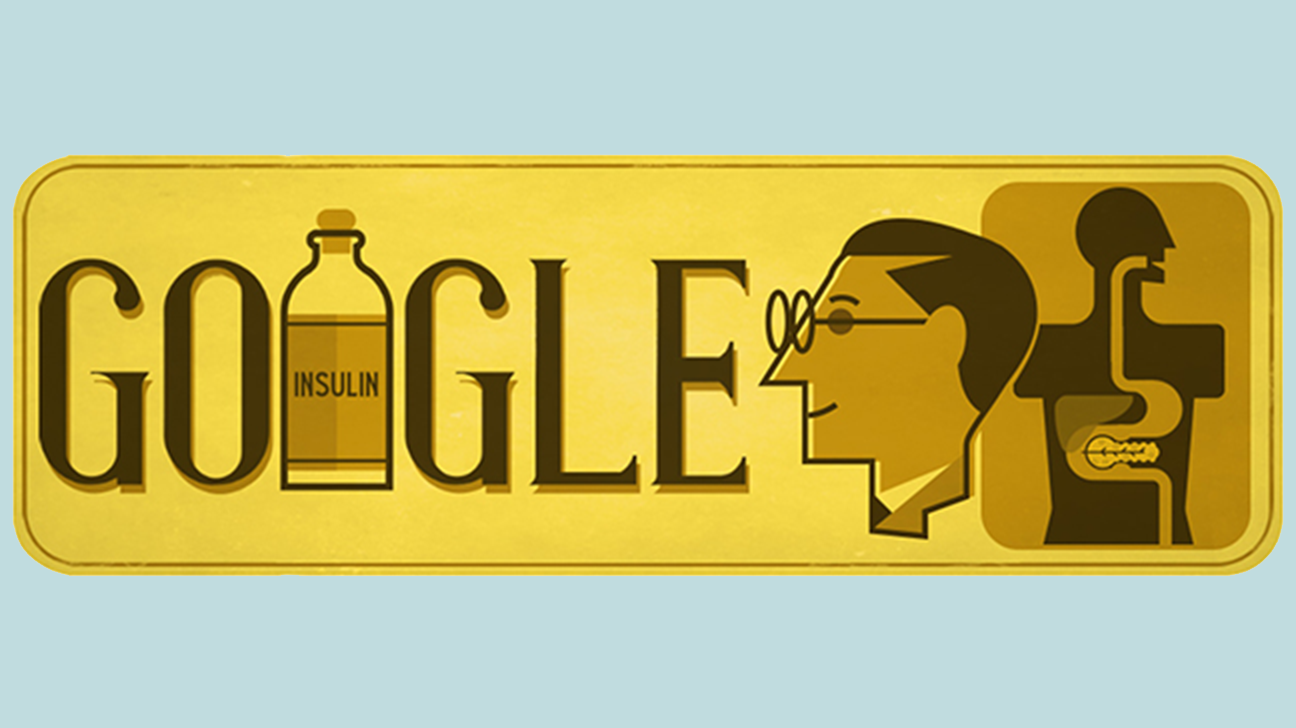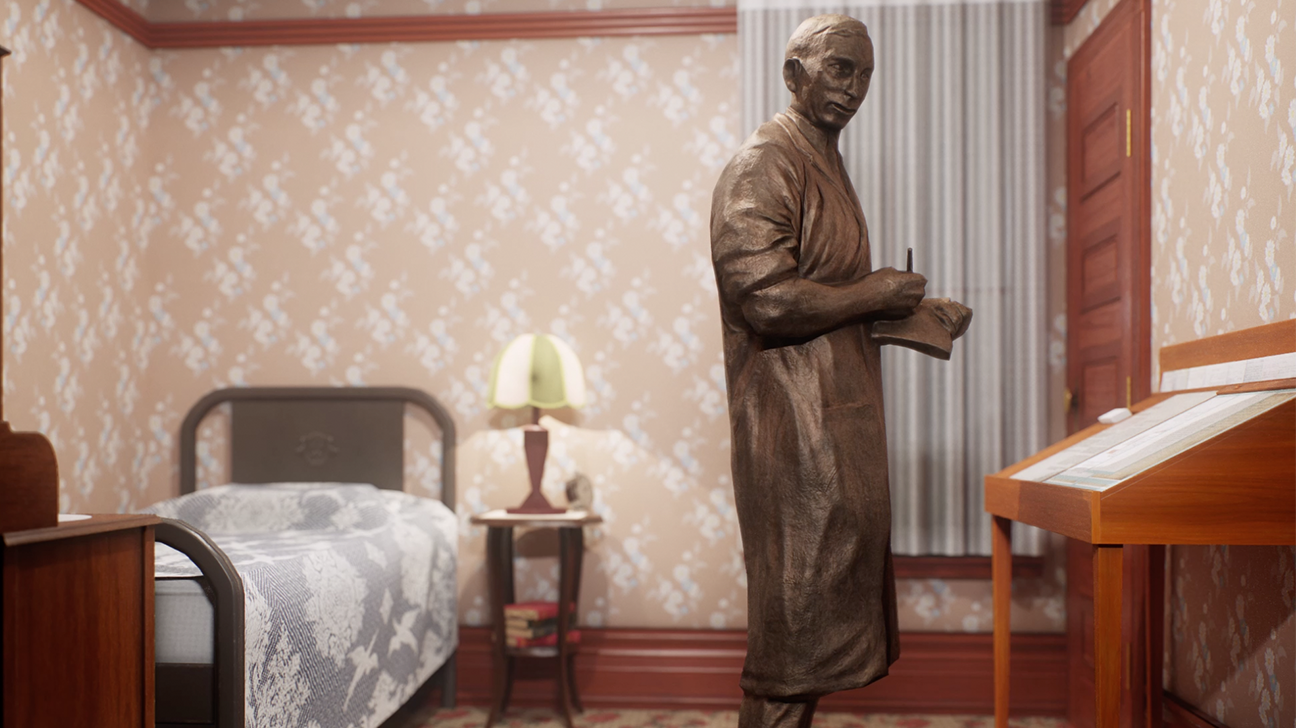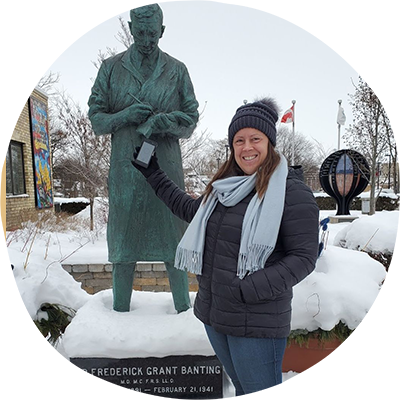The Big 100th Anniversary for Insulin
2021 marks the 100th anniversary of the most important and impactful event for many in the Diabetes Community: the discovery of the life-sustaining liquid that would transform this condition from a death sentence into a manageable condition for millions worldwide.
Insulin was discovered in 1921 by Drs. Frederick Banting and Charles Best. But marking a century since that amazing development involves more than honoring these pioneers.
In fact, the Defining Moments Canada Insulin 100 team leading this historical initiative is adamant that a series of events from 1920 to 1923 actually mark insulin's brightest initial moments, leading to where we are now.
The ironic and unfortunate reality is that today, many people can't afford the lifesaving insulin they need.
Some are forced to ration, even to the point of death. It's a fact that would no doubt have Banting and Best rolling over in their graves.
“It’s all very emotional, especially this year,” said Rebecca Redmond in Ontario, who has lived with type 1 diabetes (T1D) for more than two decades and happens to be a distant cousin of Banting.
“Every single person I meet or story I hear hits me in a place I cannot quite articulate. There are no words when you are directly connected to so many people who share your plight and the man who’s co-responsible for your being present,” she said.
Still, the Insulin 100 group is marking this centennial with multiple conferences and virtual events meant to appreciate and celebrate the advent of insulin, even as we recognize how much still needs to change.
New Google Doodle for Insulin 100?
To garner global attention, there's a renewed push for a Google Doodle to mark insulin's centennial.
It may seem like a long shot, but remember it happened before: Diabetes advocates spent years lobbying Google before the company actually created an insulin Doodle to honor World Diabetes Day on Nov. 14, 2016. (That date in November marks Banting’s birthday.)

It was pretty remarkable to see that diabetes artwork displayed at the top of Google’s global search page, generating awareness and likely getting millions of views that particular day.
Google did not respond to queries from DiabetesMine for this story. But who knows, it may be on the horizon.
Celebrations led by the ‘birthplace of insulin’
The historic Banting House in Ontario, Canada, is particularly invested in marking this centennial.
It's a historic site converted into a museum to honor the “birthplace of insulin,” where Banting lived at the time he came up with the idea leading to insulin’s discovery.
Located at 442 Adelaide Street in London, Ontario, the site is run by the Canadian Diabetes Association.
It was in an upstairs bedroom of this house where Banting woke up suddenly in the middle of the night on Halloween 1920, scratching notes that led to his important research that cracked the code for insulin’s use to treat diabetes.
The rest is history, of course.
Banting House initiatives for the Insulin 100 campaign include:
- a telling of the history of diabetes and diabetes research through stamps collected by one collector over the course of 40 years
- a new in-person exhibit opening July 2021 relating the story of one person's journey from the Allen “Starvation Diet” — an early draconian measure to keep people with diabetes alive — to insulin treatment
- social media campaigns throughout the coming year marking significant historic dates for insulin’s discovery leading up to October 2023, with a commemoration of Banting and Best's recognition for insulin, earning Canada’s first Nobel Prize
Augmented reality for museum visitors
Roughly 4,000 people visited the Banting House from 85 countries in 2019 before the pandemic began.
Only a fraction of those were able to visit in 2020 when the museum was closed during lockdowns. It was only open for 6 weeks between October and December 2020.
With new limited hours starting in March 2021, the museum hopes to see more visitors later in the year once COVID-19 vaccines are more widely distributed and as international travel resumes.
Meanwhile, a new augmented reality (AR) app offers a way to virtually visit the historic house.

While the app is free and available on both iOS and Android, it’s unfortunately only for people who actually travel to the birthplace of insulin in Canada and take the tour.
“With COVID restrictions limiting the hours we are open to the public, this experience will provide an outdoor activity to add to their current routine and provide an enjoyable and educational experience,” said Grant Maltman, Banting House curator.
“Museums are about the stories behind the objects. Our hope is that these vignettes will encourage participants in the experience to visit the museum after or even later having had a taste of what we have to offer,” he said.
For people who visit and can access the app, there are five experiences to choose from while standing in Banting Square:
- Bedroom. Visitors can walk through a virtual door and stand in Banting's bedroom. His statue comes to life and recites the events of October 31, 1920, from his memoir. He then walks over to the "Dear Dr. Banting" exhibit and reads a number of letters that were left for him in the room.
- Artwork. A selection of Banting’s artwork “floats” in the square, and you can walk up close enough to view them as if you were standing in the gallery inside.
- World War II service. Banting served in the Canadian military and died in 1941, during his military service. His funeral is recreated through the reading of his eulogy and a series of images highlighting his military medical research contributions, each with a voice-over explanation.
- Flame of Hope. A video of the kindling of this memorial flame by the Queen of England in 1987 is shown, as well as other imagery and stories related to its significance as a symbol for the diabetes and medical research communities.
- Commemorative bricks. You can experience standing in the upper garden, watching the commemorative bricks rise from the ground around you and then dissolve. At the end there's a link to purchase your own commemorative brick.
Maltman said this AR experience offers excellent detail, maybe even better than a live tour. For example, he said the eulogy isn’t included in the in-person tour because it’s too long.
We're hoping that Banting House will choose to eventually make this mobile AR experience more widely available to the public. That’s a sentiment echoed by at least one Banting relative as well.
A word from Banting’s distant cousin

Diagnosed with T1D as a teenager in 1999, Redmond reflects on the history of insulin and how it’s so important to her survival.
“Growing up I was aware of Banting's remarkable discovery but always found connection through art, as I too am an artist,” she told DiabetesMine. “However, that connection shifted and became more intimate when I was diagnosed at age 17.”
Though Redmond has had many chances to visit Banting House, and her son has written notes to their famous distant relative researcher in that historic bedroom, she wishes more people had the opportunity to visit virtually during this centennial year that’s still gripped by COVID-19 and its aftermath.
“I wish they were open to offering the world a glimpse inside,” she told DiabetesMine. “I know it's what my cousin would have wanted.”
Indeed, it's famously reported that Banting said “insulin belongs to the world, not to me.”
He gave half his Nobel Prize cash award to one of the co-inventors responsible for insulin's purification, who had been overlooked. He also sold the original patents for insulin to the University of Toronto for $1 each.
That spirit of community and caring is certainly something to celebrate as well.
- - - - - - - - - -
Originally published on DiabetesMine

Comments